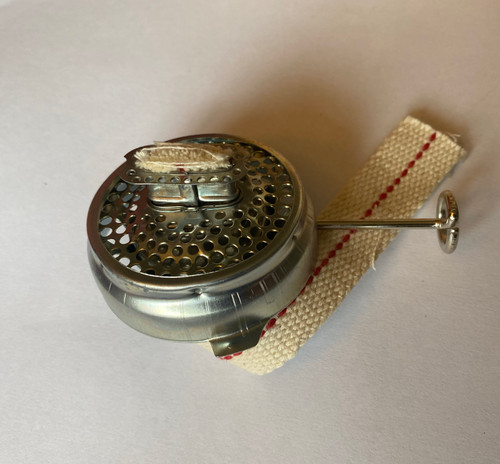In 1840, at the tender age of twenty‐two, Robert Edwin Dietz commenced his trade in whale oil and camphene lamps and lanterns. In 1859, in partnership with his brother Michael, he secured a patent for the first practical flat wick burner—an ingenious invention designed expressly for the novel fuel oil, kerosene.
A decade later, after acquiring the defunct Archer and Pancoast Company from a receiver, Mr. Dietz divested his interest in "Dietz & Company" and turned his attention to the manufacture of "Irwin Patent" tubular lanterns. From that time onward, the R.E. Dietz Company has produced hundreds of lantern models and emerged as a pioneer in the burgeoning automotive lighting industry.
In 1868, Robert E. Dietz divested himself of his stake in Dietz and Company and joined forces with Absalom Smith to establish a new firm, Dietz & Smith. Yet when Mr. Smith procured 6,000 velocipedes—a mid‐nineteenth‐century invention—on the company’s credit, Mr. Dietz deemed him an unsuitable partner, repurchased Smith’s share, and continued the enterprise under the name R.E. Dietz.
In June 1897, a catastrophic fire reduced the R.E. Dietz factory in New York City to ashes. To forestall the prospect of ruin, the firm merged with the Steam Gauge and Lantern Company of Syracuse, and in due course, its manufacturing operations were transferred to Syracuse.
By 1906, Dietz had embarked upon the production of acetylene gas headlights and taillights for automobiles and trucks. Acetylene—produced from calcium carbide—served as the luminous agent, yet the lamps based on this technology proved ephemeral and did not endure as a lasting means of illumination.
Dietz likewise became renowned for producing the majority of road work warning lights. The earliest of these were oil lanterns—bearing the distinguished Traffic-Gard trademark—and road torches that resembled cannonballs outfitted with large, commanding wicks, with kerosene serving as their customary fuel. In time, the company advanced its craft by developing among the first transistorized warning lights, marketed under the Visi-Flash trademark, which operated on standard 6‑volt lantern batteries and alternated between rhythmic blinking and a steady, unwavering glow.
Under the stewardship of Gerry Dietz, the company was reestablished in Hong Kong. In 1956, production was relocated from the United States, initially to Hong Kong, and thereafter, in 1988, to China.












